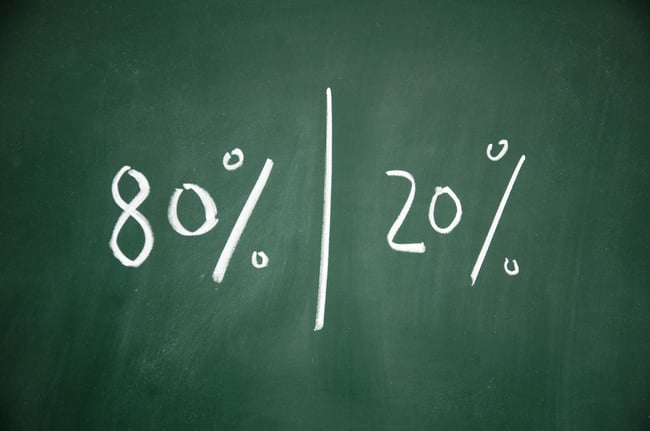Label Love: How to read the nutrition facts label
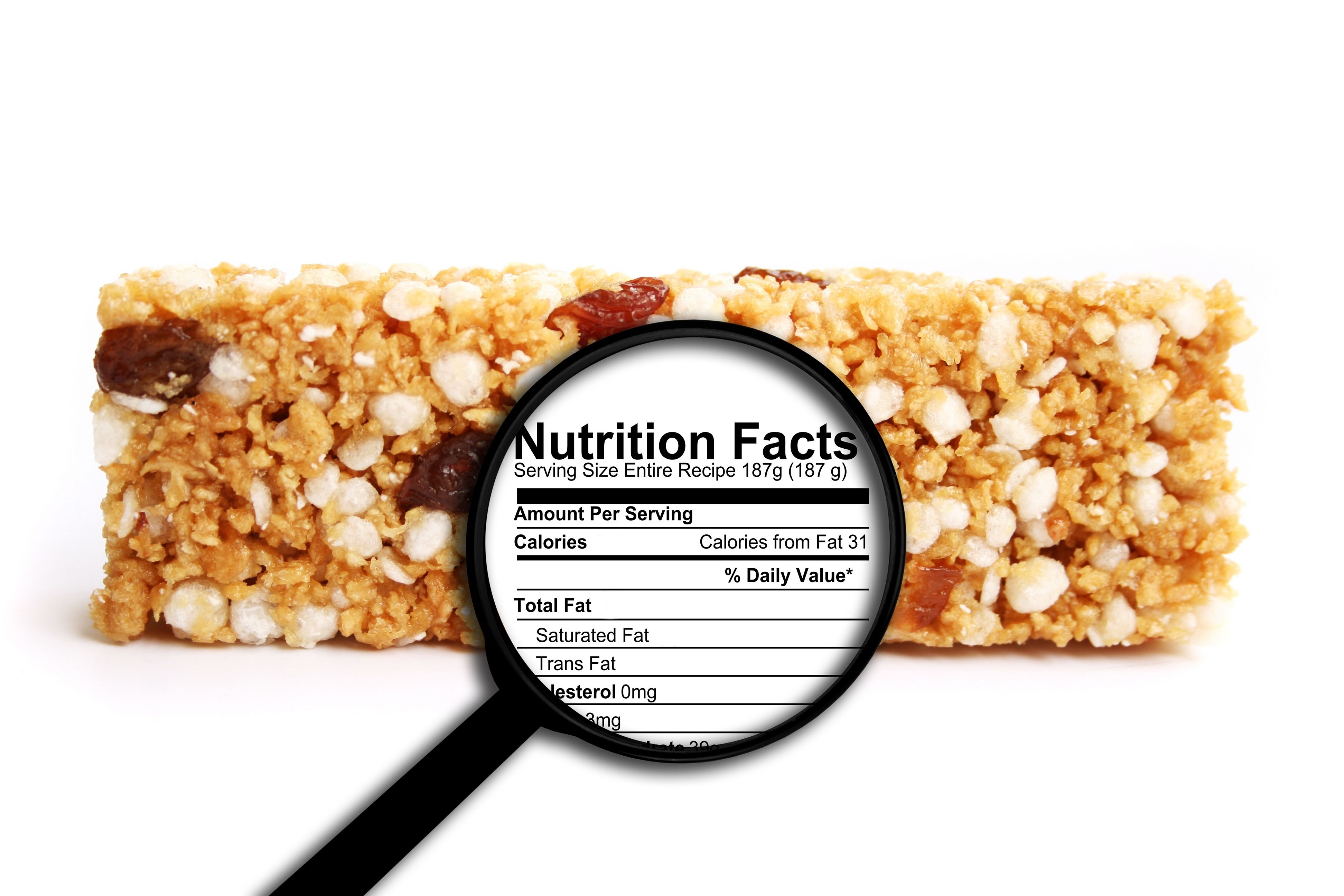
It’s February, the month of St. Valentine! This month, especially, many of us take extra time to show our families, significant others, friends, and even pets how much they mean to us. But there’s one very important person that you may forget needs little extra love…
Did you ever think treat yourself this month, too? By treating, I mean taking care of yourself and spending time on your personal health. When life gets busy, oftentimes one of the first things that falls by the wayside is personal health. This month, I challenge you to love YOU! One way to take care of yourself is to fill your body with nourishing foods so you feel your best and have energy to achieve your goals!
This month’s seminar topic is “Label Love.” The key to nourishing your body is getting the facts on what you are consuming by reading the Nutrition Facts label.
The Nutrition Facts label has just gotten a makeover and it’s important to know what’s what. Here is a quick guide for deciphering the nutrition label:
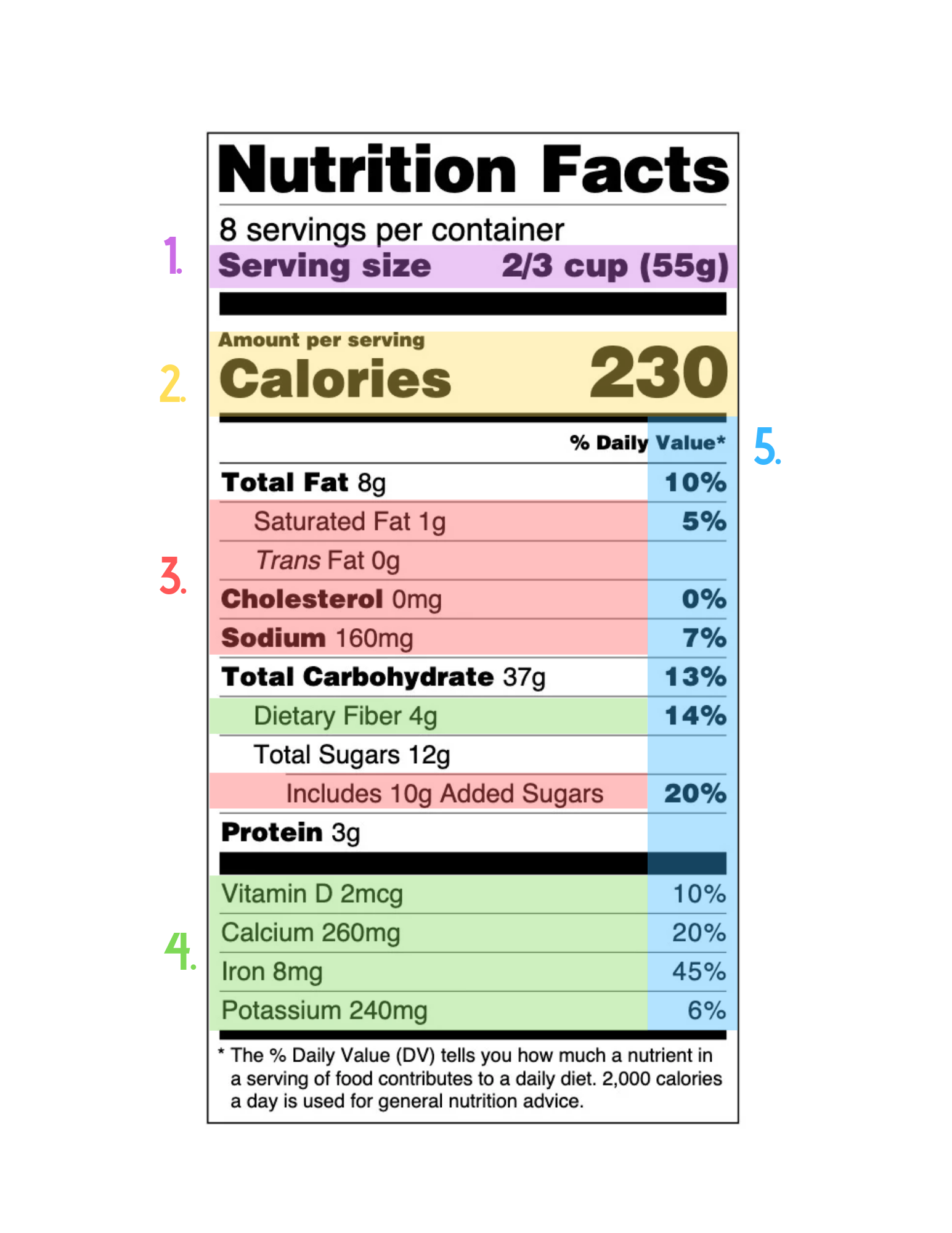
- Start with the Serving Size. On the new label, this serving represents the amount of food typically consumed in one sitting, not necessarily the recommended amount to consume at once. The numbers on the label are representative of the nutrients in that serving, or amount of food.
- Check out the Calories. This number tells you how much energy you will consume based on the serving size.
- Caution the Nutrients to Limit. Look for lower numbers on saturated fat, trans fat, cholesterol, sodium, and sugar. The new label has a section specifically for added sugars, which is a handy tool. Saturated/trans fats and sugar should both be under 10% of daily total calories according to the 2015-2020 Dietary Guidelines for Americans.
- Encourage Nutrients to Increase. Dietary fiber, unsaturated fats (polyunsaturated and monounsaturated), vitamins, and minerals are all nutrients you should aim to increase for a healthful diet.
- Use the % Daily Value as your Guide. As a quick reference, 5% is considered low and 20% is considered high. For example, 25% DV of Fiber means that one serving of that product provides an excellent source of fiber; a quarter of your recommended daily fiber needs.
For more insights and tips on reading food labels, come to a FREE Nutrition Seminar at 6 PM on Tuesday Feb 4th or Tuesday Feb 25th at LivRite Fishers.
Topics: Nutrition
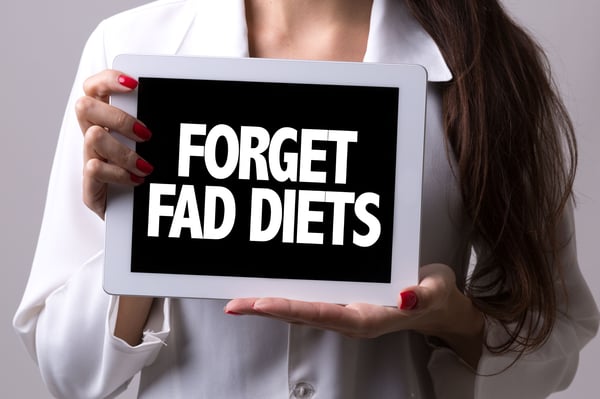
It’s time to ring in the new decade, 2020!!
As is common for the new year, we make resolutions for personal growth and well-being. One of the most common resolutions for Americans is improving health. With the noble resolutions to eat healthier or lose weight, so too come the not-so-noble fad diets.
Fad diets are popular for a period of time, without having standard dietary recommendations, and often promising unreasonably fast weight loss or nonsensical health improvements. They are often unfounded in science, set the dieter up for failure, and may even be harmful to long-term health.
Here are 10 important signs of fad diets to watch out for (and alternatives to try instead) before jumping on the bandwagon to try the latest trending diet.
10 RED FLAGS of FAD DIETS
-
Sounds too good to be true. If a diet sounds too good to be true, it probably is. There is no magic fast and permanently effective solution for weight loss.
→ The key to sustainable weight loss is small, manageable lifestyle changes.
-
Promises fast results. Avoid diets that promise rapid weight loss exceeding 1-2 pounds per week; drastic weight loss is not healthy, and you will most likely end up gaining that weight back as soon as you go off the diet.
→ Instead, focus on eating in a way that helps you feel nourished, satisfied, and energized.
-
No exercise component. Nutrition and physical activity are the two key components of any weight-management plan. They go hand-in-hand; ignoring one will not lead to lasting results.
→ The key to success is to find physical activities that you enjoy; aim for 30-60 minutes of activity on most days of the week (150 minutes of moderate physical activity or 75 minutes of vigorous activity per week).
-
Restrictive; limits food groups. All food groups offer healthful, nutritious options; unless you have a medical need to limit a certain food group, there is no reason to banish an entire food group from your diet.
→ Focus on a variety of nutrient-dense options from all food groups.
-
Lists “good” and “bad” foods. The only “bad” foods out there are ones that are spoiled or will make you physically ill if you eat them. Yes, there are foods that are more nutrient-dense than others, but restricting certain foods and labeling them as “bad” can lead to cravings and an unhealthy relationship with food.
→ Enjoy all foods in moderation. Make indulgences occasional and in small portions so you won’t feel guilty about treating yourself.
-
Specific food combinations. There is no evidence that combining certain foods or eating foods at specific times of day will help with weight loss. Eating the "wrong" combinations of food doesn't cause them to turn to fat immediately or to produce toxins in your intestines, as some plans claim.
→ Aim for a balanced meal from a variety of food groups at all eating occasions.
-
Expensive “miracle” products. Don’t buy into gimmicks. There is no magic diet pill, meal replacement smoothie, or elixir that will exclusively make you keep weight off. These also often lack scientific evidence and are not proven to be effective.
→ There are plenty of nutritious options that can fit into your budget at the grocery store Check out December’s Blog on How to Become a Grocery Guru: There is no need to waste your money on expensive supplements or shakes.
-
Claims based on before-and-after photos. Ads that rely solely on weight loss photos to sell their product likely do not have real science to back their claims.
→ A successful diet plan is one that is extensively studied and supported by sound, reliable research.
-
Based on anecdotal evidence or celebrity endorsements. These endorsers probably get paid to advertise. Moreover, just because a diet worked for one person does not mean it will work for you.
→ Follow your own plan and what works best for you.
10. Based on a single study only or misrepresented scientific studies. Just because a singular study concluded merit to a certain diet, does not mean it is so in every case. It is important to cross-check multiple studies, since scientific studies may be misrepresented by the media.
→ It is important to examine all claims critically. Consult a dietitian to help determine the best plan for you.
In 2020, set yourself up for success, not failure by fad diets. Best strategies for healthier diets include those that are sustainable, balanced, inclusive, feasible, enjoyable, and holistic.
For more information on successful diet strategies, don’t miss out on the FREE nutrition seminar, Diet Distress, Tuesdays at 6 PM in LivRite University (Fishers location).
Topics: Nutrition

It’s said to be “the most wonderful time of the year!” ...Gathering with friends and family, taking
time to be thankful for all our blessings, and celebrating all the memories from this year while
looking forward to next year…
Though as we know, this time of year may not be holly jolly at every moment. It seems to be
things get tighter… our wallets as we shop for the perfect gifts, our time as work deadlines
approach, and maybe even our pants as we snag a few too many holiday cookies!
The last thing we want to do is spend extra money, time, and calories on our grocery store trips.
So here are 5 ways to make the most of your grocery shopping trips:
1. Make a list and check it twice. Santa does it - so should you. Before you even leave
the house, do some menu planning for the week to see what all you need to buy. Check
your fridge/freezer for leftovers to see if you can incorporate anything you already have.
Take inventory of your pantry to see if there is anything you need to restock.
2. Fuel your tank. Not just your car’s gas tank, don’t shop on an empty stomach; this may
lead to impulse buys and unhealthy food choices. Having a piece of fruit, handful of nuts,
or even just a glass of water before you leave the house will help keep your stomach at
bay to reduce cravings.
3. Savor the season(al). Shop seasonal produce when you can, since it is often on sale
and is at its peak nutritional quality. In December, look for cranberries (see LivRite’s
Produce of the Month blog!), winter squashes and brussels sprouts!
4. Consider convenience costs. Pre-cut produce or meal kits may certainly help you on a
busy weeknight, but it is also more expensive than if you prepared it yourself from
scratch. But if it helps you get in all your servings of fruits and vegetables, then it may be
worth it.
Also, store bought dressings, sauces, or ready-to-eat products are often higher
in calories, fat, and sodium than homemade. At home, you can control your own
ingredients and amounts you add to dishes.
5. Compare nutrition labels. I know they say “don’t judge a book by its cover,” but
absolutely judge a product based on its nutrition label! When comparing two different
products or brands, check the serving size first so you can compare apples to apples
(pun intended). Pay attention to the calories, saturated fat, sodium, cholesterol, and
added sugars. These nutrients should be limited.
Grocery shopping is one of the first steps to living a healthy lifestyle. Choose ingredients and
products based on nutrition and what will fuel your body best to achieve greatness.
For even more grocery shopping tips, check out LivRite's FREE nutrition seminars this month on Tuesday December 10th and December 17th at 6:00 PM at LivRite Fishers!
Topics: Nutrition
5 Simple Eating Commandments Everyone Should Follow
1. Eat healthy 80% of the time and indulge in your favorites the other 20%
My advice to you would be don’t live off a steady diet of cookies. It’s still crucial to eat smart and to have balance in everything that you do. There’s the famous joke, “I do everything in moderation, except moderation.” While this always puts a smile on my face, moderation is key. You’re out to dinner — order some pasta. Special occasion — have the cake. Celebrating — drink up! Day-to-day basis? Be smart. Eat organic non-processed foods. Choose colorful foods full of nutrients to heal and fuel your body. Want a glass of wine (or two) with your beautiful, nutritious meal? Cheers to your health and sweet, sweet balance.
2. Keep healthy foods on-hand at all times
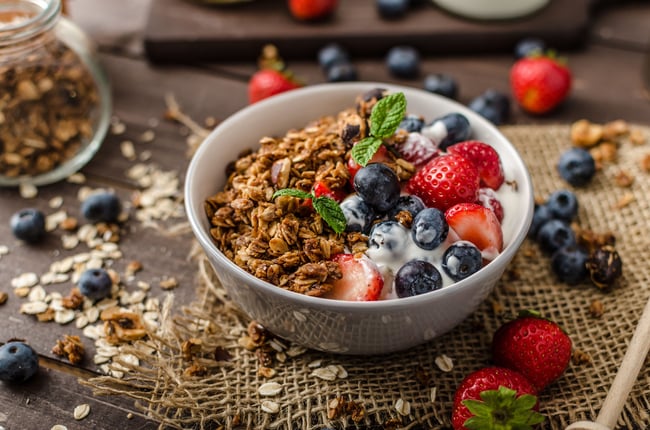
Access to quality snacks, like whole-food bars and nuts, can help keep you on track
Snacks are an important part of a healthy diet because they can boost metabolism, prevent weight gain, and provide the energy you need to stay strong all day long. Choose the wrong types of snacks, however, and you may find yourself skipping the gym for the couch.
In today’s fast-paced world, it can be tempting to choose pre-packaged goodies that are loaded with sugars and artificial ingredients that will cause you to crash and burn. That’s why it’s important to plan ahead and always have nutritious choices on hand.
Try preparing snacks ahead of time to store in the fridge and pantry. So, the next time that mid-afternoon fatigue hits, reach out for healthy snacks you already have stored and ready-to-go. This will help you stay on target with your healthy eating plan and weight loss goals.
Check out these easy healthy snack recipes!
Honey Balsamic Roasted Brussels Sprouts
3. Fiber, fiber, fiber
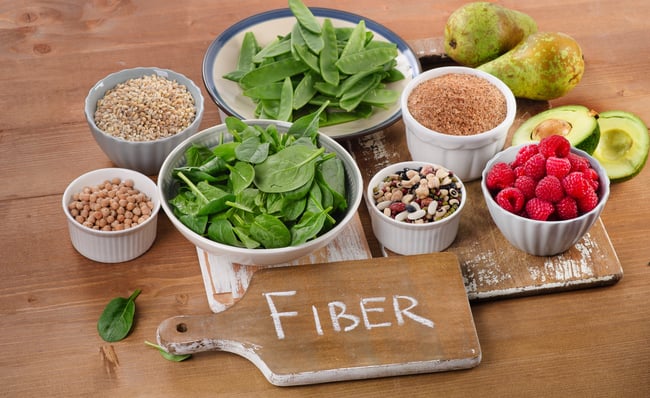
Fiber helps control blood sugar, maintain healthy cholesterol, and improve digestion.
Fiber is more than just a diet buzzword, it is a crucial nutrient that your body needs to ward off chronic illnesses and achieve optimal health. Aim to consume at least 25 grams of fiber per day, filling your plate with fruits, vegetables and whole grains, as well as reading labels on your everyday food products and choosing food items with the most fiber.
4. Focus on protein at breakfast
Protein slows digestion and promotes satiety.
Protein is a building block of cells throughout the body. It is necessary for healthy skin, nails, muscles, cartilage and blood. Protein helps to build and repair bodily tissues, and it is used to produce hormones and enzymes. When you eat protein for breakfast, you will feel more energized and ready to take on your day. You are also more likely to feel full longer, which can lead to healthier eating habits and possibly even weight loss.
5. Don’t fear fat
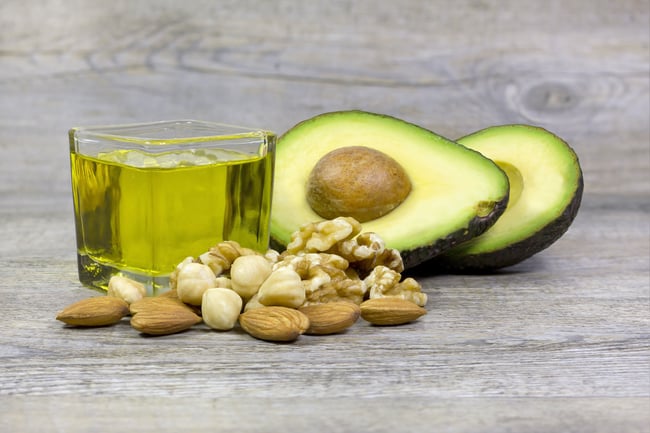
Healthy fats help us absorb nutrients, build cells, and manage inflammation.
Fat. That single word evokes a sense of panic in many. Don’t eat the fat! Buy the low-fat—always! But times they are a-changin’, kind of. And when it comes to high-quality, nutritious and natural fats (the stuff that comes from the earth and not the packaged, processed kinds), they are nothing to be afraid of. In fact, they might just help you to better absorb certain nutrients, keep your belly feeling full and help with weight-loss—all in moderation, of course!
Topics: Nutrition
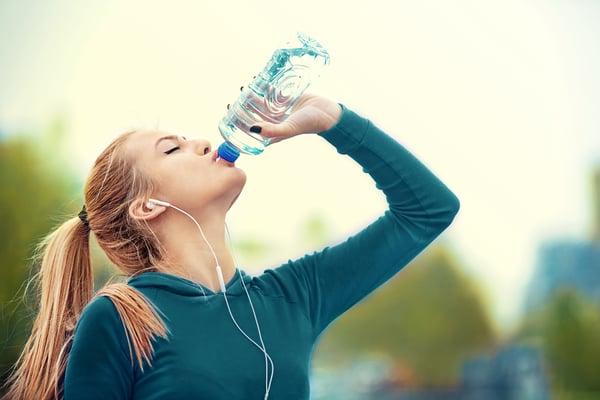
I always tell my clients to drink water if they have a craving, a headache, are constipated, hungry, etc. Water is so beneficial, so easy, so free yet so easily overlooked. It’s really a no brainer (actually your brain is 90% water!!). Your body is about 70% Water makes up the majority of your blood and every cell in your body is composed of water. It should come as no surprise, your body needs water to function properly.
As with most things, the amount of water needed varies for each individual, but if your urine isn’t mostly clear or if you have any of the symptoms I mentioned above, you most likely aren’t getting enough H2O. Some suggest 8 (8oz) glasses a day while others suggest take your body weight (in pounds), divide it in half and drink that many ounces. Listen to what your body needs.
If you don’t care much for the taste of… nothing, then you can add a squirt of lemon, a squeeze of lime, a few sprigs of fresh mint or a cucumber or an orange slice. You can even be so bold as to add a few berries or watermelon. What ever gets you to drink up. Cheers to your good health!
10 Reasons Why You Should Drink More Water:
-
Increases Energy & Relieves Fatigue
Since your brain is mostly water, drinking it helps you think, focus, and concentrate better. As an added bonus, your energy levels are boosted and you will feel more alert!
-
Promotes Weight Loss
Removes by-products of fat, reduces eating intake (by filling up your stomach if consumed prior to meals), reduces hunger (hello natural appetite suppressant!), raises your metabolism and has zero calories!
-
Flushes Out Toxins
Gets rid of waste through sweat and urination, which reduces the risk of kidney stones and UTI’s (urinary tract infections).
-
Improves Skin Complexion
Water moisturizes your skin, keeps it fresh, soft, glowing and smooth. It gets rid of wrinkles. It’s the best anti-aging treatment around!
-
Boosts Immune System
A water guzzler is less likely to get sick. And who wouldn’t rather feel healthy the majority of the time? Drinking plenty of water helps fight against flu, cancer and other ailments like heart attacks.
-
Maintains Regularity
Aids in digestion as water is essential to digest your food and prevent constipation.
-
Prevents Cramps & Sprains
Proper hydration helps keep joints lubricated and muscles more elastic making joint pain less likely.
-
Natural Headache Remedy
Water helps relieve and prevent headaches (migraines & back pain too!) Which are commonly caused by dehydration.
-
Puts You In A Good Mood
When your body is functioning at its best, you will feel great and be happy!
-
Saves You Money!
Water is FREE! Even if you choose bottled/filtered water, it’s still cheaper than that high sugar and fat-filled latte!
Find more great health and fitness tips from LivRite trainers.
Topics: Nutrition

